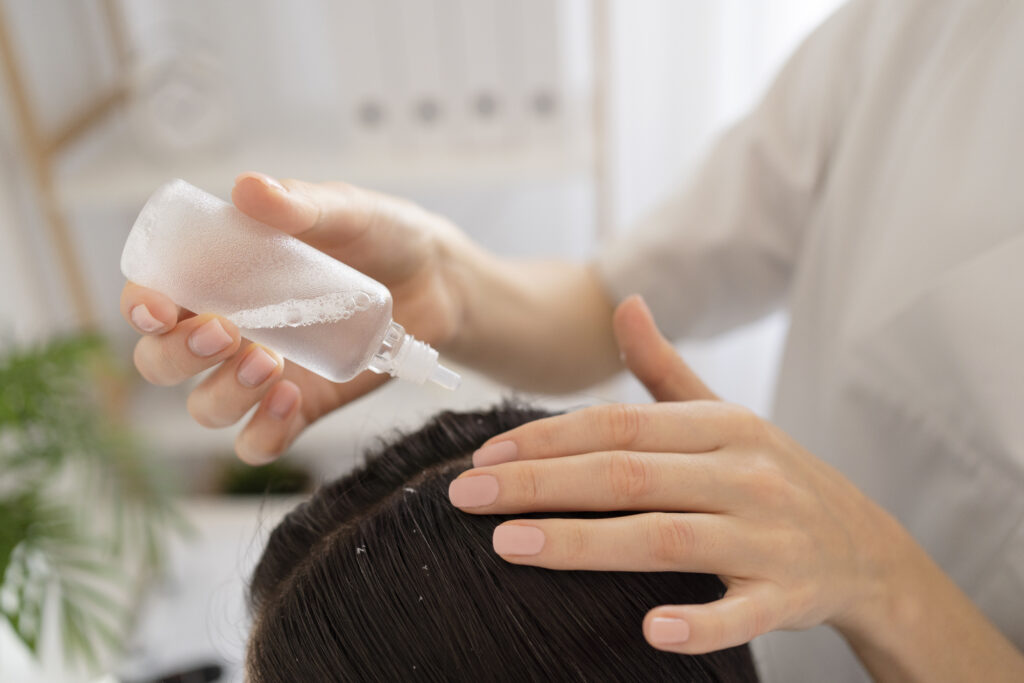
When it comes to maintaining healthy, beautiful hair, one size does not fit all. Just as hair types vary, so do the needs of your scalp. A tailored scalp care routine can make a world of difference in how your hair looks and feels. In this blog post, we will explore scalp care strategies customized for different hair types, helping you achieve optimal hair and scalp health.
1. Oily Scalp and Fine Hair:
Use a clarifying shampoo to remove excess oil and product buildup.
Shampoo frequently to keep the scalp clean.
Avoid heavy, oil-based conditioners, opting for lightweight, volumizing options.
Be gentle with styling products to prevent additional oil buildup.
2. Dry Scalp and Thick, Coarse Hair:
Use a hydrating, sulfate-free shampoo to prevent moisture loss.
Limit shampooing to avoid over-drying the scalp.
Apply a rich, deep conditioner to nourish and soften thick hair.
Incorporate scalp massages to stimulate blood flow and promote natural oil production.
3. Sensitive Scalp and Curly Hair:
Choose a gentle, fragrance-free shampoo to avoid irritation.
Wash hair less frequently to prevent drying out natural oils.
Opt for a silicone-free conditioner to enhance curls without weighing them down.
Use a wide-toothed comb or your fingers to detangle and style curly hair, minimizing scalp stress.
4. Normal Scalp and Straight Hair:
Use a balanced, mild shampoo and conditioner to maintain scalp health.
Shampoo every other day or as needed, depending on your activity level.
Focus on hair strength and shine with occasional deep conditioning treatments.
Experiment with various hairstyles to change your look without overloading the scalp.
5. Dandruff-Prone Scalp and Wavy Hair:
Choose an anti-dandruff shampoo with active ingredients like zinc pyrithione or salicylic acid.
Shampoo regularly to manage flakiness.
Apply conditioner mainly to the ends of your hair to avoid excess oil on the scalp.
Comb hair gently to minimize scalp irritation.
6. Aging Scalp and Thinning Hair:
Use a shampoo and conditioner designed to promote hair growth and thickness.
Massage your scalp regularly to stimulate hair follicles.
Consider scalp treatments with ingredients like minoxidil.
Protect your hair from sun and heat damage to maintain its strength and shine.
7. Colored or Chemically Treated Hair:
Choose sulfate-free shampoos and conditioners to preserve color and scalp health.
Use color-protecting treatments to maintain vibrancy.
Avoid excessive heat styling to prevent further damage to chemically treated hair.
Incorporate deep conditioning treatments to restore moisture and prevent breakage.
8. Heat-Damaged Scalp and Natural Hair:
Use hydrating shampoos and deep conditioners to repair damage.
Limit heat styling and use heat protectant products.
Adopt protective hairstyles to minimize stress on the scalp.
Stay consistent with moisturizing and sealing routines to retain natural hair moisture.
Conclusion:
Taking care of your scalp is essential for maintaining healthy hair, and the approach should be customized to your unique hair type. By selecting the right products and techniques tailored to your scalp’s specific needs, you can achieve the best possible hair and scalp health. Remember, consistency and patience is key to seeing long-term improvements in the look and feel of your hair.

